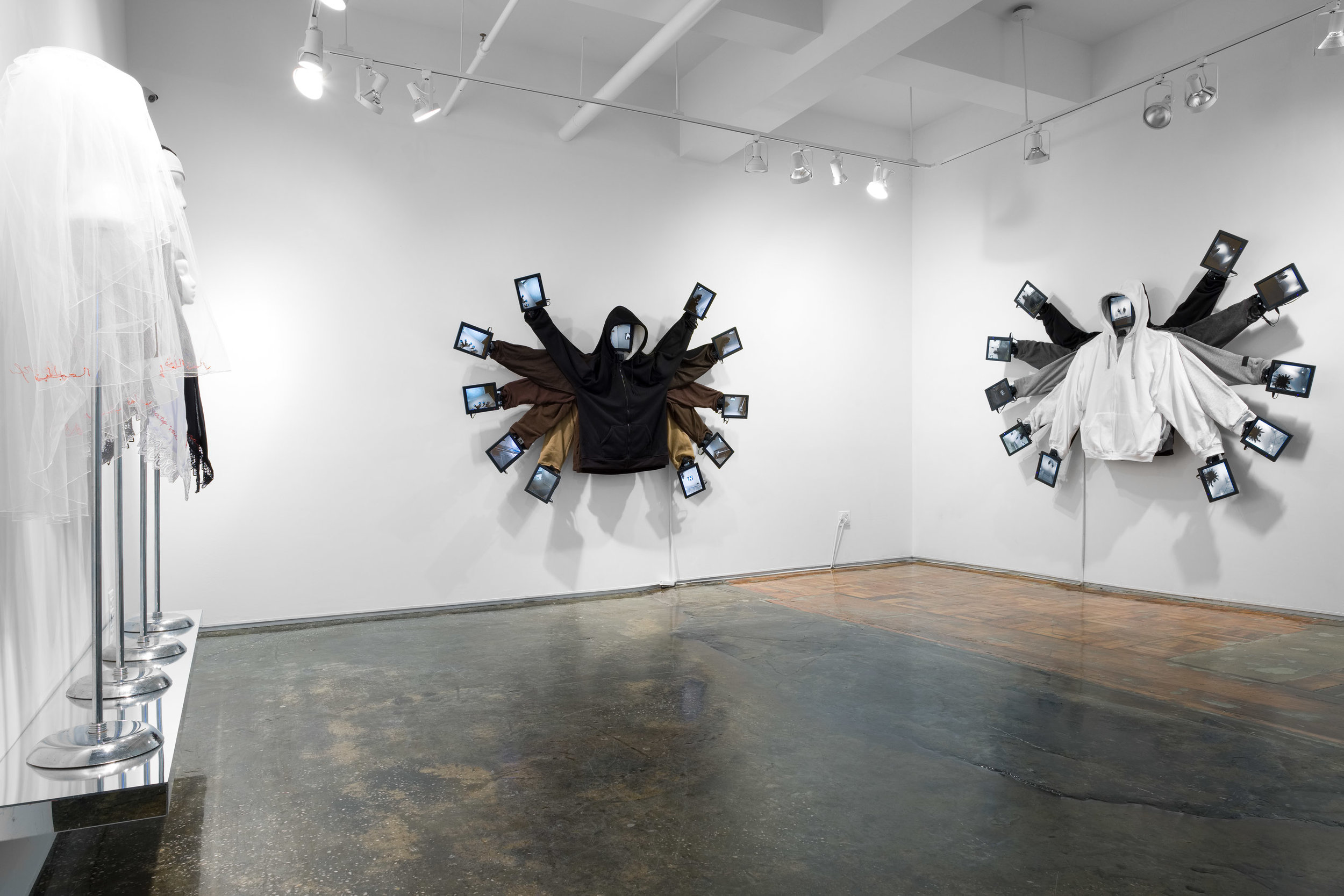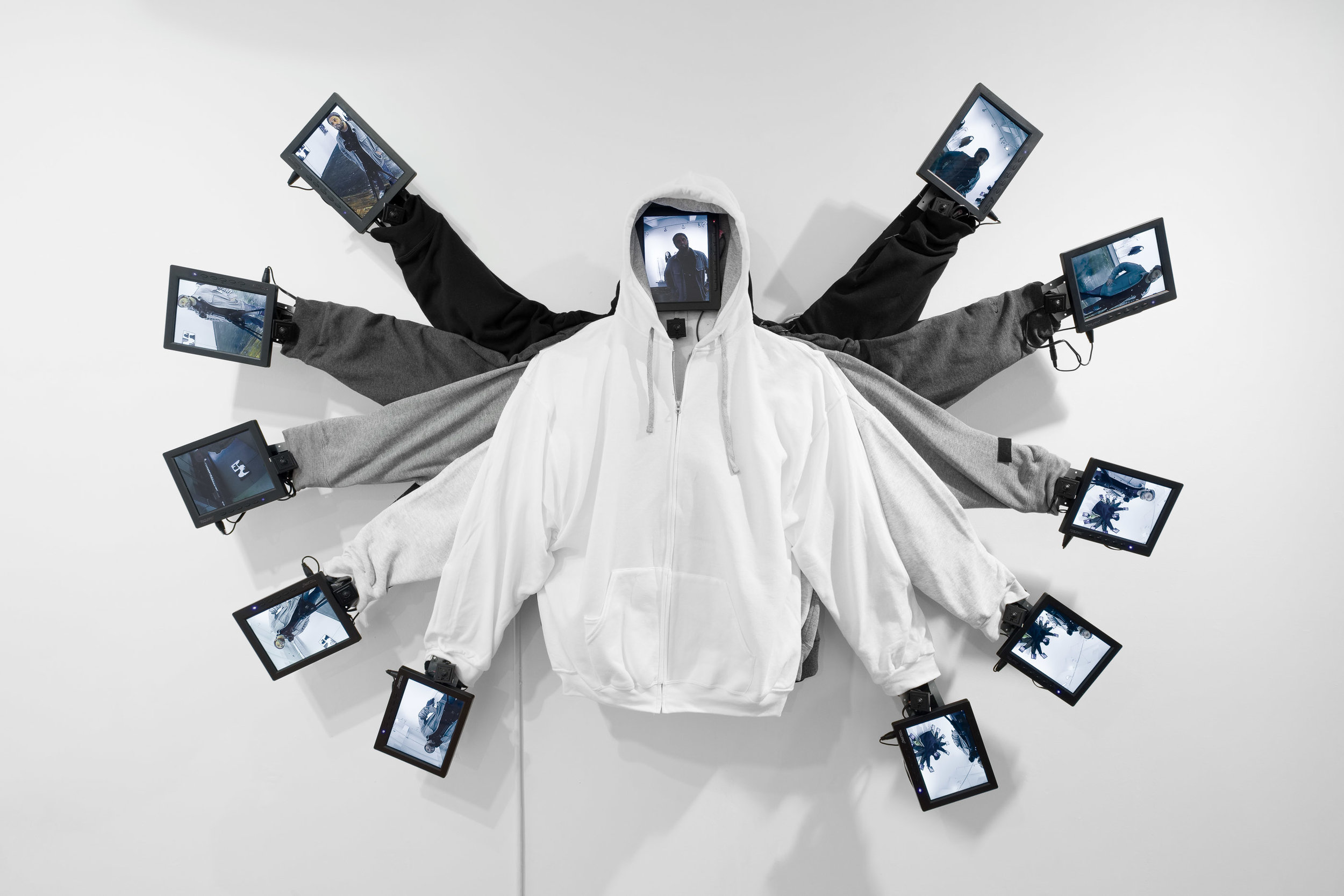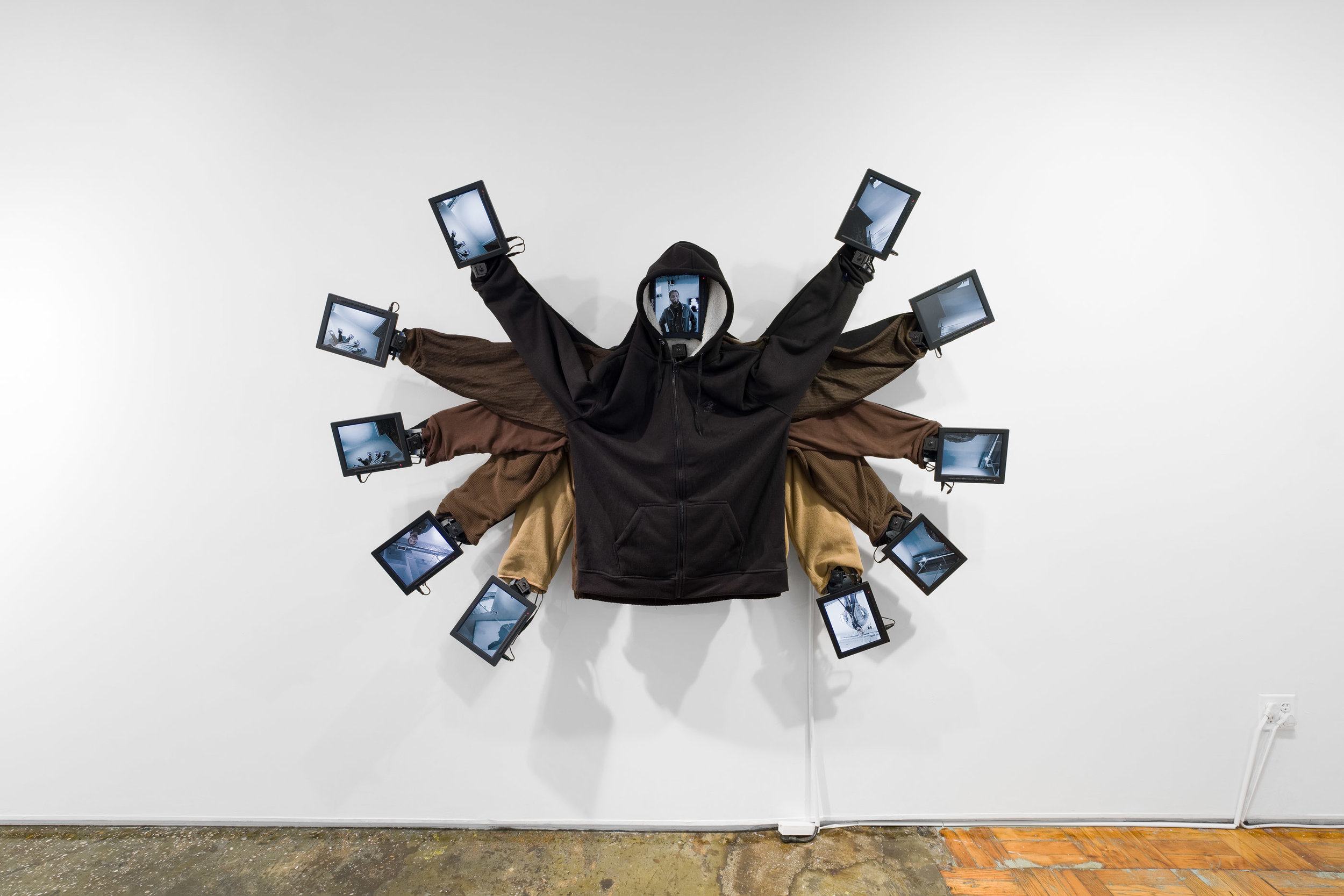Seeing Things
Ann Stoddard
Gallery III
Black Angel, 2016
November 16 - December 17, 2017
Opening reception: Friday, November 17, 6-8pm
First Thursday Gallery Walk: December 7, 6-8PM
Seeing Things focuses on the artistic deconstruction of racial and ethnic profiling. Through video and conceptual installations and social sculptures, Ann Stoddard is inquiring: Are we seeing things? Is our vision warped by implicit bias? Can art and technology increase empathy?
Artist Statement
Public space is open and borderless, with layered contexts and contradictory points of view. The “SEEING THINGS” series responds to the profiling of and violence against Black men, and to the banning and profiling of Muslims. “SEEING THINGS”- installations, social sculptures, videos- proposes the artistic deconstruction of racial and ethnic profiling, and asks viewers: Are we seeing things? Is our vision warped by implicit bias? Can art and technology increase empathy?
Video installation social sculptures offer an interactive approach to video portraiture, evoking a wired public space context, combining conceptual art with a collective spirit, - electronics with a low-tech sensibility. Mirroring default white privilege, “ColorBlind” reframes the viewer via 11 micro-video cameras/ monitors housed in hoodie sweatshirts arranged by ‘grey scale’, from white (hands-down) to black (hands-up). Micro-video cameras ‘watch the watchers’, inviting viewers to explore the relationship between his/her live screen image and racial profiling. Similarly endowed with 10 arms, 11 cameras/ monitors, “Black Angel” suggests a stop-action “hands up” response to a police order. Micro-video cameras reframe viewers in the context of monitors housed in black/ brown/tan/ beige hoodies; sweatshirt order is calibrated by skin tone and probability of being racially profiled. “Black Angel” is intended to encourage empathy by reverse perspective, referencing Black victims of racial violence, Shiva, Jesus. Micro-video cameras elevate the viewer’s role while empowering the profiling ‘target’, reversing expectations of ‘who’s profiling whom?’
Works responding to systemic post-9/11 ethnic profiling of Muslims are informed by living and teaching in Morocco, a Catholic girlhood, instruction in embroidery and sewing, and activism. The 4-channel video installation “Seeing Things, Headscarf” displays random juxtapositions of a woman donning a scarf in a black-and-white quad-screen video, conceptual art and fashion transcending stereotypes: What’s the big deal about headscarves? Who decides when scarves are fashion, when they signify devotion, - repression? Riffing on the popular video "100 ways to tie a scarf", “Seeing Things, Headscarf” sources include Audrey Hepburn wearing scarf-and-sunglasses in "Charade", Hijab, bridal veils, the Virgin Mary.
“BARED THREADS” [installation] is a faux store display of veils with subversive textual reinscriptions. Bold crimson embroidery (artist’s) reveals commonalities of fashion across cultures in a post-9/11 context of ethnic profiling. “Kemar” (face veil) is inscribed in flowing Arabic across a Western ‘fingertip’ wedding veil, while a white Hijab reads “Fingertip Veil.” “Headscarf” is scrolled across the black Hijab, while “Hijab” is inscribed in Arabic across a nun’s veil. Reverse labeling challenges traditional Western assumptions and implies awkward questions: How does a Western wedding veil covering the face differ from a burqa or niqab? Who decides when veils are fashion statements, when veils signify repression?
Read the full press release here.
View the artist's page here.





